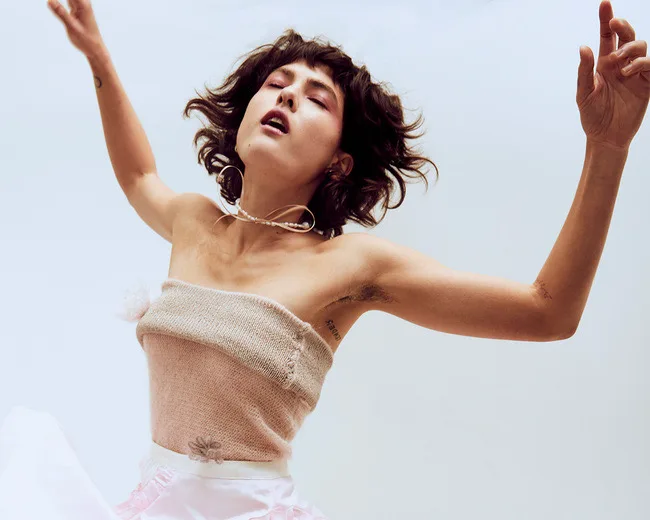Thinking Swiftly: Taylor Swift, the Zeitgeist, and the Signature Image of Youth
She’s likely the first name that comes to mind when you think of the most recent Superbowl (LVIII). Her name was emblazoned across Time magazine covers as “Person of the Year” (2023). Her concerts have attracted crowds in the tens of thousands. Taylor Swift…an icon of the modern era…a charismatic figure…a pop superstar. She’s renowned for her “long list of ex-lovers” (often misheard as “Starbucks lovers”) and the breakup songs she produces about them. Who really is this Taylor Swift, though? Let’s investigate further and find out.
Swift Bio
Taylor Alison Swift- born December 13, 1989, in West Reading, Pennsylvania- showed an interest in music at an early age1. She progressed quickly from children’s theater to appearing inaugurally before crowds of thousands of people1. At age 11 she sang “The Star-Spangled Banner” at a Philadelphia 76ers basketball game, and the following year, she picked up her guitar and began writing songs1. Swift took inspiration from country music stars such as the Dixie Chicks (now the Chicks) and Shania Twain, and she crafted her own original, “tween angst” material1. When she was 13, her parents- Scott and Andrea Swift- sold their Pennsylvanian farm and moved to Hendersonville, Tennessee (much closer to Nashville)1.
Taylor took great advantage of Nashville’s “country music capital of the nation” reputation and soon developed a deal with RCA Records1. She became acquainted with recording-industry veterans, and, in 2004 (at age 14), she signed on with Sony/ATV as a songwriter1. Fledgling Big Machine label executive Scott Borchetta noticed Swift and her many performances at venues across the Nashville area and signed her onto his label1. In the summer of 2006, Taylor Swift released “Tim McGraw,” a single alluding to and inspired by her favorite country artist1. It was an immediate success and spent eight months on the Billboard country singles chart1.
The 16-year-old Taylor Swift dropped her first, eponymous album in 2007 and went on tour, opening for The Rascal Flatts1. Her first album was certified platinum and sold more than one million copies in the United States1. Swift continued her rigorous touring schedule and opened for other famous artists such as Kenny Chesney, Faith Hill, and Tim McGraw himself1. That November, she received the Horizon Award for best new artist from the Country Music Association (CMA)1.
Catapulting To Fame
Swift refined her mainstream pop sensibility without losing her country roots in her follow-up album, Fearless (2008)1. Fearless sold more than half a million copies in its first week and opened number one on the Billboard 200 chart1. Other singles from that album, including “You Belong with Me” and “Love Story,” were very popular as well (the latter accounting for more than four million paid downloads)1.
In 2009, Swift played to sold-out venues across North America, embarking on her first tour as a headliner, and she dominated the industry award circuit1. The Academy of Country Music recognized Fearless as album of the year, and Swift topped the best female video category for “You Belong with Me” at the MTV Video Music Awards (VMAs) that September1. Kanye West infamously interrupted her award speech, shouting out Beyoncé for having “one of the best videos of all time.”
She littered her third album, Speak Now (2010), with allusions to romantic relationships with John Mayer, Twilight actor Taylor Lautner, and Joe Jonas of the Jonas Brothers1. Swift also reclaimed the CMA entertainer of the year award in 2011, and the single “Mean” won her a Grammy for best country solo performance/ country song(1).
Swift focused on the vagaries of young love in her next album, Red (2012), which embraced a bold pop-rock sound, sold 1.2 million copies in its first week on sale in the U.S., and gave the artist her first number-one hit, “We Are Never Ever Getting Back Together,” on the Billboard pop singles chart1.
Over the years, with the release of her albums 1989 (2014), Reputation (2017), Lover (2019), Evermore (2020), Midnights (2022), and more, Taylor Swift spanned numerous genres (including hip-hop/rap and alternative) and rose to the status of global, singer-songwriter superstar. Her melodies are catchy, and her lyrics are heartfelt1. Her latest album (Midnights) won her Grammy Award for album of the year, and she became the first artist to win in that category four times1. At the time of this article, Taylor Swift is currently dating Kansas City Chiefs player Travis Kelce.
The Swift Appeal
Does Taylor Swift earn all the hype she gets? Yes and no. Taylor Swift is a charismatic pop star with an enduring appeal and an adoring fanbase…not too different from Elvis Presley, Michael Jackson, or Lady Gaga. Swift isn’t some sea-changing musical genius with Shakespearean insights into the human condition, though. But perhaps it is that lack of an insightful salient edge that contributes to her charm. She doesn’t need to be a cultural virtuoso. Her lyrics are diffuse but also elegant and relatable.
Anyone in their 20s or 30s can reflect on the “little big” moments—in bedrooms, dorm rooms, hallways, concerts, crowded bars, beaches, and late-night drive-throughs—and colorize their kaleidoscopic youth-memories with Swift’s music. We are all of course acquainted with the timeless themes of love and sex and heartbreak and friendship and family and aging. Taylor Swift perhaps overstays her welcome, producing adolescent “breakup” songs well into her mid-30s, but she courts a certain nostalgic charm in doing so.
“22” is all about the “YOLO” mindset- dancing away during one’s prime, “magical and miserable” years. “Champagne Problems” focuses on existential, interpersonal worries. “Anti-Hero” is a self-reflective piece in which Swift focuses on her own age and reputation. “Welcome to New York” tractor-beams her youthful vibrant psychology into the flashing lights and busy streets of America’s “city that never sleeps.”
Swift epitomizes the modern “zeitgeist” in all its collective and individual messiness. She is an older-millennial, and yet her music fuses the feelings of the three youngest generations…the poster-girl for the 21st century. Her tunes capture the intimacy of the small-town and the fashionable adventurousness of the big city…the post-9/11 to the post-Covid…Uber Eats and iPhones and Netflix and OK Cupid. Taylor Swift is a “material girl in a material world.” But she punctuates something about our collective spirit (as all pop stars are bound to do).
That ultimately is Taylor Swift’s appeal…the appeal of so many musical pop superstars. They colorize the canvas of youth and give it a signature image.
SOURCES
- Taylor Swift | Biography, Albums, Songs, Grammys, & Facts | Britannica




